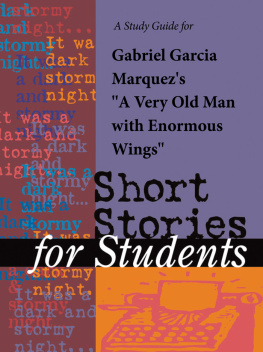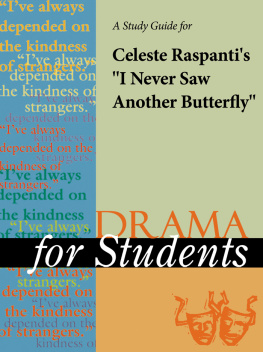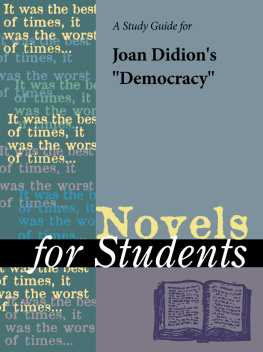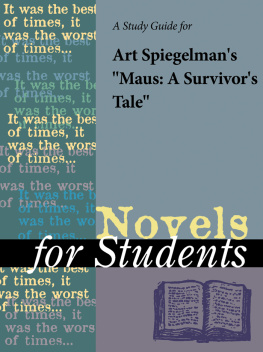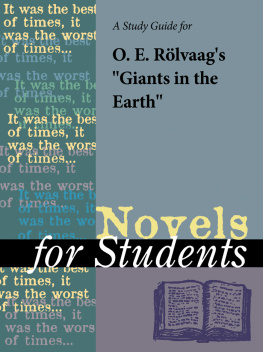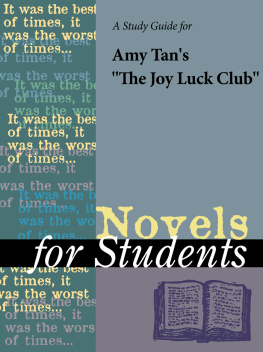TABLE OF CONTENTS
Guide
Short Stories for Students, Volume 6
Staff
Editorial: Tim Akers, Editor. Donald Akers, Tim Akers, Thomas Bertonneau, Cynthia Bily, Paul Bodine, Carol DellAmico, Catherine V. Donaldson, Tom Faulkner, Benjamin Goluboff, Diane Andrews Henningfeld, Rena Korb, Oliver Lovesey, Sarah Madsen Hardy, Jacqueline Perret, Elisabeth Piedmont-Marton, Eric Rapp, Sketchwriters. Jeffrey W. Hunter, Maria Job, Daniel Jones, Deborah A. Schmitt, Polly Vedder, Timothy J. White, Kathleen Wilson, Contributing Editors. James P. Draper, Managing Editor.
Research: Victoria B. Cariappa, Research Team Manager. Andrew Malonis, Research Specialist.
Permissions: Maria Franklin, Interim Permissions Manager. Kimberly Smilay, Permissions Specialist. Kelly Quin, Permissions Associate. Sandra K. Gore, Permissions Assistant.
Production: Mary Beth Trimper, Production Director. Evi Seoud, Assistant Production Manager. Cindy Range, Production Assistant.
Graphic Services: Randy Bassett, Image Database Supervisor. Mikal Ansari, Robert Duncan, Imaging Specialists. Pamela A. Reed, Photography Coordinator.
Copyright Notice
Since this page cannot legibly accommodate all copyright notices, the acknowledgments constitute an extension of the copyright notice.
While every effort has been made to secure permission to reprint material and to ensure the reliability of the information presented in this publication, Gale Research neither guarantees the accuracy of the data contained herein nor assumes any responsibility for errors, omissions, or discrepancies. Gale accepts no payment for listing; and inclusion in the publication of any organization, agency, institution, publication, service, or individual does not imply endorsement of the editors or publisher. Errors brought to the attention of the publisher and verified to the satisfaction of the publisher will be corrected in future editions.
This publication is a creative work fully protected by all applicable copyright laws, as well as by misappropriation, trade secret, unfair competition, and other applicable laws. The authors and editors of this work have added value to the underlying factual material herein through one or more of the following: unique and original selection, coordination, expression, arrangement, and classification of information. All rights to this publication will be vigorously defended.
Copyright 1999
The Gale Group
27500 Drake Road
Farmington Hills, MI 48331-3535
All rights reserved including the right of reproduction in whole or in part in any form.
This book is printed on acid-free paper that meets the minimum requirements of American National Standard for Information SciencesPermanence Paper for Printed Library Materials, ANSI Z39.48-1984.
ISBN 0-7876-3606-1
ISSN 1092-7735
Printed in the United States of America
10 9 8 7 6 5 4 3 2
A Very Old Man with Enormous Wings
Gabriel Garcia Marquez
1968
Introduction
Written in 1968, Un seiior muy viejo con alas enormes (A Very Old Man with Enormous Wings) is typical of a style known as magic realism, which is closely associated with its author, the Colombian novelist Gabriel Garcia Marquez. This imaginative style combines realistic, everyday details with elements of fantasy, blurring the readers usual distinctions between reality and magic. But unlike other works of the imagination such as fairy tales or folk legends, stories of magic realism lead to no clear morals or simple truths; they present a rich and vivid world of magical possibilities, while frustrating and complicating the readers efforts to fix a definite meaning to events.
Very simply stated, this is the story of what happens when an angel comes to town. But while it is subtitled A Tale for Children, it is by no means a simple story. The setting is no ordinary town, and its visitor is no ordinary angelindeed, he may very well not be an angel at all. In most respects, he seems disappointingly ordinary and human, despite his extraordinary appearance. Because he contradicts their expectations, the characters we meet seem thoroughly incapable of understanding him; their conventional wisdom and superstitious beliefs lead them into absurd explanations for his sudden visit, and they treat him in a manner that seems cruel, unjust, and ignorant.
Magic realism has been a popular and influential form, attracting a wide readership and a great deal of interest from literary scholars. Drawing on the stories and legends of his rural South American childhood, as well as his study of the sophisticated techniques of modernist writers, Garcia Marquez creates a rich and suggestive fictional landscape that challenges traditional modes of thought and focuses the readers attention on the difficult, elusive work of making sense of the world.
Author Biography
Gabriel Jose Garcia Marquez was born on March 6, 1928, in Aracataca, Colombia, a small town in a farming region near the Caribbean coast. His birth came just as this region entered a sudden economic decline after twenty years of relative prosperity. His father, an out-of-work telegraph operator, relocated, leaving young Gabriel to be raised by his grandparents for the first eight years of his life.
These early circumstances are significant, for they seem to have had a profound influence on the mature writers work. Garcia Marquez has said that he had learned everything important in his life by the time he was eight years old, and that nothing in his writing is purely a product of fantasy. As a boy, he delighted in his grandfathers storytelling, from which he heard local legends and history; from his grandmother and the other villagers, he absorbed a wealth of traditions, superstitions, and folk beliefs. Drawing heavily on such sources, Garcia Marquez has developed an imaginative style literary critics call magic realism. Many of his stories, including the celebrated epic novel Cien aos de soledad (One Hundred Years of Solitude 1967), are set in a fictional village named Macondowhich seems to be based on Aracataca, and in some ways reflects the rich, confusing world of childhood as well. Like the unnamed villages in A Very Old Man with Enormous Wings and The Handsomest Drowned Man in the World, Macondo seems to be half-real and half-mythical, a place where dreams and the supernatural are blended with the details of everyday life, and where the most extraordinary events are somehow accepted as normal, even if they cant be adequately explained. Old men, like the winged gentleman in A Very Old Man with Enormous Wings, are frequent characters in Garcia Marquezs writing, leading critics to speculate that they may all be derived, in part, from the authors own grandfather.
Garcia Marquez rejoined his family in Bogota, moving from a tropical village to a cold city high in the Andes mountains; he graduated from high school in 1946, and entered the National University in Bogota as a law student in 1947. However, the following year marked the beginning of la violencia, a decade-long period of civil warfare in Colombia, which would disrupt his life in many ways. When violence in Bogota caused the university to close, Garcia Marquez transferred to the University of Cartagena (near Aracataca on the northern coast) to continue his law studies. While there he also took a job as a journalist and began to write fiction seriously. In 1950 he dropped out of law school and moved to nearby Barranquilla. He found newspaper work and joined a circle of local writers who admired the work of European and American modernist authors (including James Joyce, Franz Kafka, Virginia Woolf, William Faulkner, and Ernest Hemingway), and who sought to apply their styles and techniques to Latin American settings and themes in their own writings. Garcia Mrquez has acknowledged the particular influence of Faulkner and Hemingway on his own early work, and critics often compare his fictional creation of Macondo to that of Yoknapatawpha County, the recurring setting for many of Faulkners novels and short stories.

